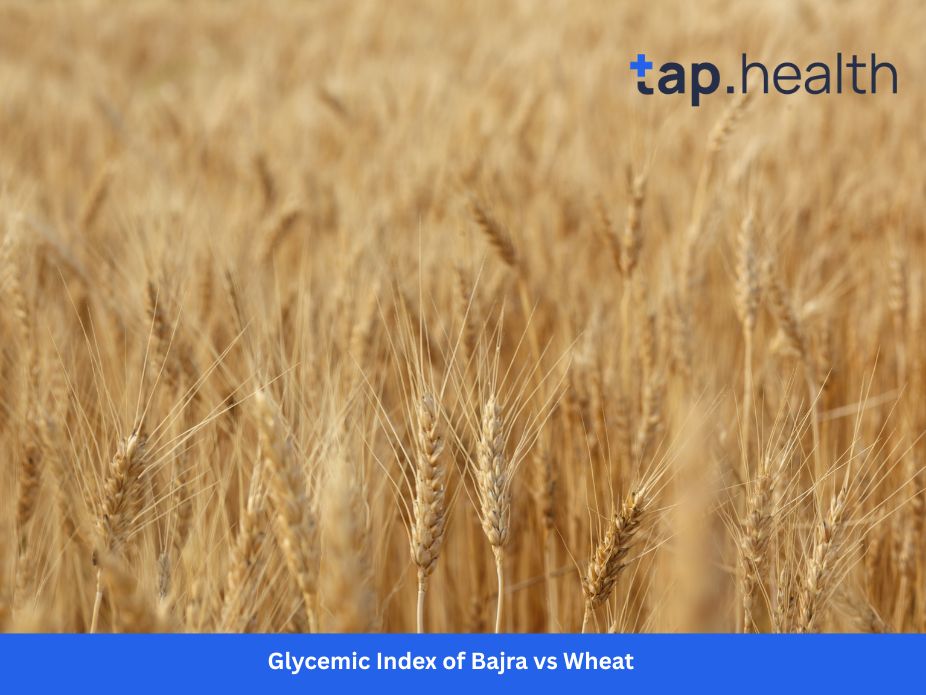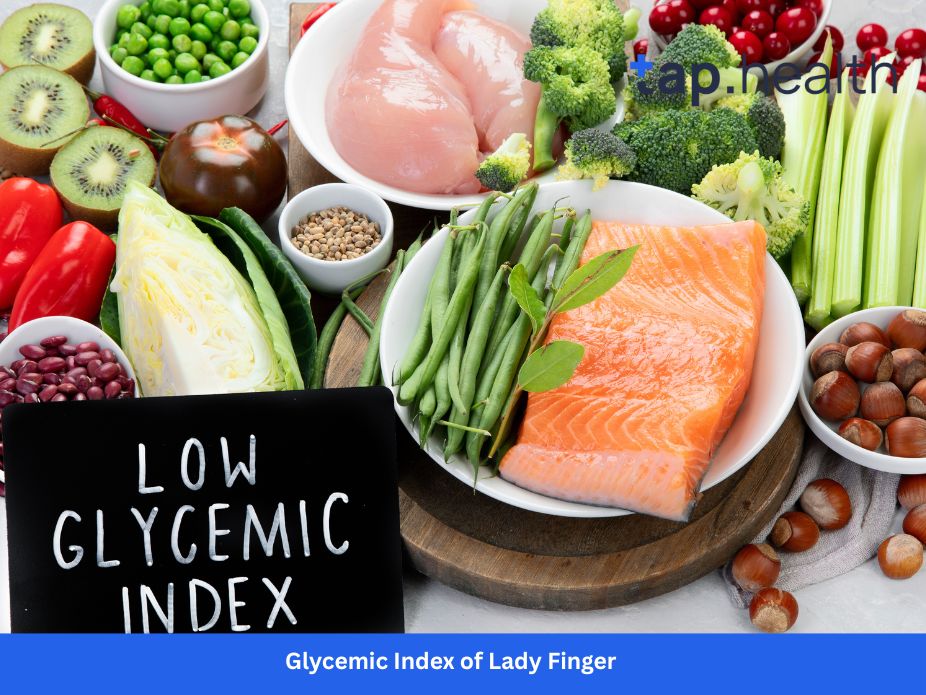In today’s health-conscious world, understanding the glycemic index (GI) of the foods we consume is important—especially for those managing diabetes or anyone looking to maintain steady blood sugar levels. Two grains that often come up in health discussions are ragi (also known as finger millet) and wheat. Both are staples in many diets around the world, but how do they compare in terms of their glycemic index, and what do their differences mean for your health?
In this blog, we will explore the glycemic index of ragi and wheat, their nutritional benefits, how they affect blood sugar, and tips for incorporating them into a balanced diet. Whether you are diabetic, aiming to lose weight, or simply want to eat healthier, understanding the glycemic index of these grains will help you make informed choices.
What is Glycemic Index (GI)?
Before diving into the specifics of ragi and wheat, it’s essential to understand what glycemic index (GI) is. The glycemic index is a scale from 0 to 100 that measures how much a food raises blood sugar levels after consumption. Foods are ranked as follows:
- Low GI (55 or below): Foods that cause a slow, steady rise in blood sugar.
- Medium GI (56-69): Foods that cause a moderate increase in blood sugar.
- High GI (70 or above): Foods that cause a rapid spike in blood sugar.
Foods with low GI are especially helpful for managing blood sugar levels, while high-GI foods can lead to quick spikes and crashes. Understanding GI is particularly important for those with diabetes or those looking to maintain energy throughout the day without sudden drops or spikes in blood sugar.
Glycemic Index of Ragi and Wheat
Both ragi and wheat are whole grains commonly used in various forms—flour, porridge, bread, and more. But when it comes to managing blood sugar, their GI values can vary significantly.
Glycemic Index of Ragi
Ragi, or finger millet, is a highly nutritious grain that is gaining popularity for its health benefits. The glycemic index of ragi is relatively low, ranging between 50 to 55. This means that ragi has a slow, steady impact on blood sugar, making it an ideal choice for diabetics or anyone aiming to manage their blood glucose levels.
Ragi’s low GI is primarily due to its high fiber content, particularly soluble fiber, which slows the absorption of glucose into the bloodstream. The presence of antioxidants and micronutrients like calcium, iron, and vitamin D further enhances its health benefits.
Glycemic Index of Wheat
On the other hand, wheat—especially when consumed as refined wheat (like white flour)—tends to have a higher glycemic index compared to ragi. The GI of wheat ranges between 56 and 69, depending on its form and preparation. Whole wheat tends to have a lower GI (closer to 56), while refined wheat products, like white bread or pasta, can push the GI higher, reaching the medium to high GI range.
Comparison of Ragi and Wheat GI
- Ragi: GI of 50-55 (low GI)
- Wheat: GI of 56-69 (medium to high GI, depending on the form)
From this, it’s clear that ragi is a better choice for blood sugar control, especially compared to refined wheat products. Whole wheat may still have some health benefits, but its GI is higher, meaning it has a more significant impact on blood sugar levels.
How Ragi and Wheat Affect Blood Sugar
The glycemic index of both ragi and wheat plays a crucial role in how they affect blood sugar. Let’s break it down:
1. Ragi and Blood Sugar Control
Ragi, with its low GI, causes a slow and steady increase in blood sugar after consumption. This slow absorption is beneficial for diabetes management, as it helps maintain stable blood glucose levels throughout the day. The fiber in ragi, particularly beta-glucans, contributes to its low GI by slowing down the digestive process and reducing the rapid release of glucose.
Benefits of Ragi for Blood Sugar:
- Prevents sudden blood sugar spikes
- Helps in insulin regulation
- May improve insulin sensitivity over time
- Ideal for diabetic individuals and those with insulin resistance
2. Wheat and Blood Sugar Regulation
The glycemic index of wheat, especially when refined, can cause a quicker rise in blood sugar. Foods like white bread, white pasta, and even white rice made from refined wheat products tend to have higher GI values, meaning they can cause rapid spikes in blood sugar.
However, whole wheat, which retains more of its natural fiber and nutrients, has a lower GI compared to refined wheat. This makes it a better option for those trying to manage blood sugar. But even whole wheat products still have a higher GI than ragi.
Benefits of Whole Wheat for Blood Sugar:
- Improves digestion due to fiber
- Has a moderate impact on blood sugar levels
- More nutritious than refined wheat products
- May help in managing blood sugar when consumed in moderation
Nutritional Comparison of Ragi and Wheat
Both ragi and wheat are excellent sources of carbohydrates and fiber, but they differ slightly in their nutritional profiles. Here’s a breakdown of their key nutrients:
Nutritional Profile of Ragi
- Protein: Ragi is high in protein, making it a great plant-based protein source.
- Fiber: It has a good amount of dietary fiber, aiding in digestion and blood sugar control.
- Minerals: Ragi is rich in calcium, iron, and magnesium, which are essential for bone health, blood circulation, and muscle function.
- Vitamins: Ragi is a good source of vitamin D, which supports bone health and immune function.
Nutritional Profile of Wheat
- Protein: Wheat provides a moderate amount of plant-based protein but less than ragi.
- Fiber: Whole wheat contains more fiber than refined wheat but is still lower in fiber compared to ragi.
- Minerals: Wheat contains iron and magnesium, though in lesser amounts compared to ragi.
- Vitamins: Wheat is rich in B vitamins, which support energy production and metabolism.
Ragi vs. Wheat: Which is More Nutritious?
While both ragi and wheat offer numerous nutritional benefits, ragi stands out in terms of its high calcium content, making it beneficial for bone health. Ragi is also higher in iron and magnesium, which are vital for various bodily functions.
On the other hand, wheat, especially whole wheat, is also nutritious and provides B vitamins and fiber, but its GI is higher than that of ragi. If you’re looking for a low-GI food with added micronutrients, ragi would be the better choice.
How to Incorporate Ragi and Wheat into Your Diet
Both ragi and wheat can be incorporated into a healthy, balanced diet in various ways. Here’s how you can make the most of these grains:
1. Ragi in Your Diet
- Ragi Porridge: Start your day with a warm bowl of ragi porridge. Add fruits, nuts, and a drizzle of honey for a nutritious breakfast.
- Ragi Flour: Use ragi flour to make flatbreads (roti) or dosa for a gluten-free alternative.
- Ragi Cookies and Cakes: For a healthy snack, bake ragi cookies or a ragi cake using natural sweeteners like jaggery.
2. Wheat in Your Diet
- Whole Wheat Bread: Choose whole wheat bread instead of white bread for a healthier sandwich option.
- Whole Wheat Pasta: Enjoy whole wheat pasta for a fiber-rich meal.
- Wheat Flour Rotis: Make roti using whole wheat flour for a simple and nutritious addition to your meals.
Tips for Choosing Between Ragi and Wheat
- If you are looking for better blood sugar control, ragi is a better choice due to its lower GI.
- If you prefer higher protein content and more nutrients like calcium and iron, ragi is the clear winner.
- For a balanced diet, incorporating both ragi and whole wheat can provide a variety of nutrients and benefits.
FAQs About the Glycemic Index of Ragi and Wheat
1. Which is Better for Blood Sugar: Ragi or Wheat?
Ragi is generally better for blood sugar control due to its lower glycemic index. It causes a slow and steady rise in blood sugar, while wheat (especially refined wheat) can cause a faster spike.
2. Can I Eat Ragi and Wheat Every Day?
Yes, both ragi and wheat can be consumed daily as part of a balanced diet. However, if you’re managing blood sugar levels, ragi may be a better option. Whole wheat is also a good choice but should be consumed in moderation.
3. Is Ragi Good for Diabetics?
Yes, ragi is an excellent choice for diabetics. Its low glycemic index helps maintain stable blood sugar levels, and it is packed with fiber and micronutrients that benefit overall health.
4. Which Has More Nutrients: Ragi or Wheat?
Ragi generally has more nutrients than wheat, especially in terms of calcium, iron, and fiber. It’s also rich in vitamin D, which wheat lacks.
5. How Can I Reduce the GI of Wheat?
To reduce the GI of wheat, opt for whole wheat over refined wheat products. Pair it with fiber-rich foods like vegetables and protein sources to slow down glucose absorption.
Conclusion
Both ragi and wheat are healthy grains that provide important nutrients and benefits. However, ragi stands out with its lower glycemic index, making it a better choice for those managing blood sugar levels. Incorporating both grains into a balanced diet—depending on your health needs—can provide a variety of nutrients and benefits. Whether you choose ragi for its calcium and iron content or whole wheat for its fiber and B vitamins, both can play an important role in a healthy, well-rounded diet.



